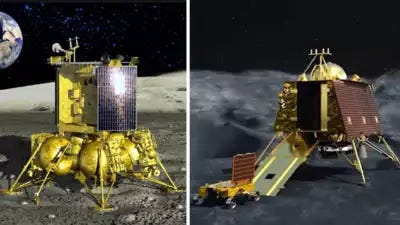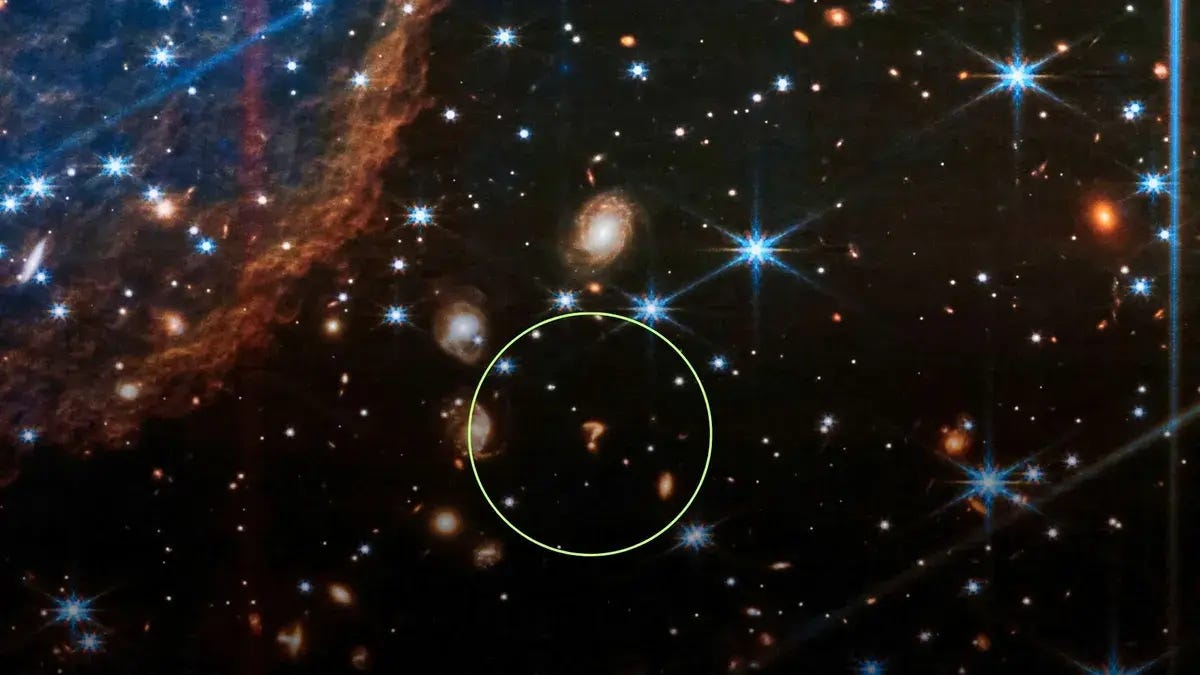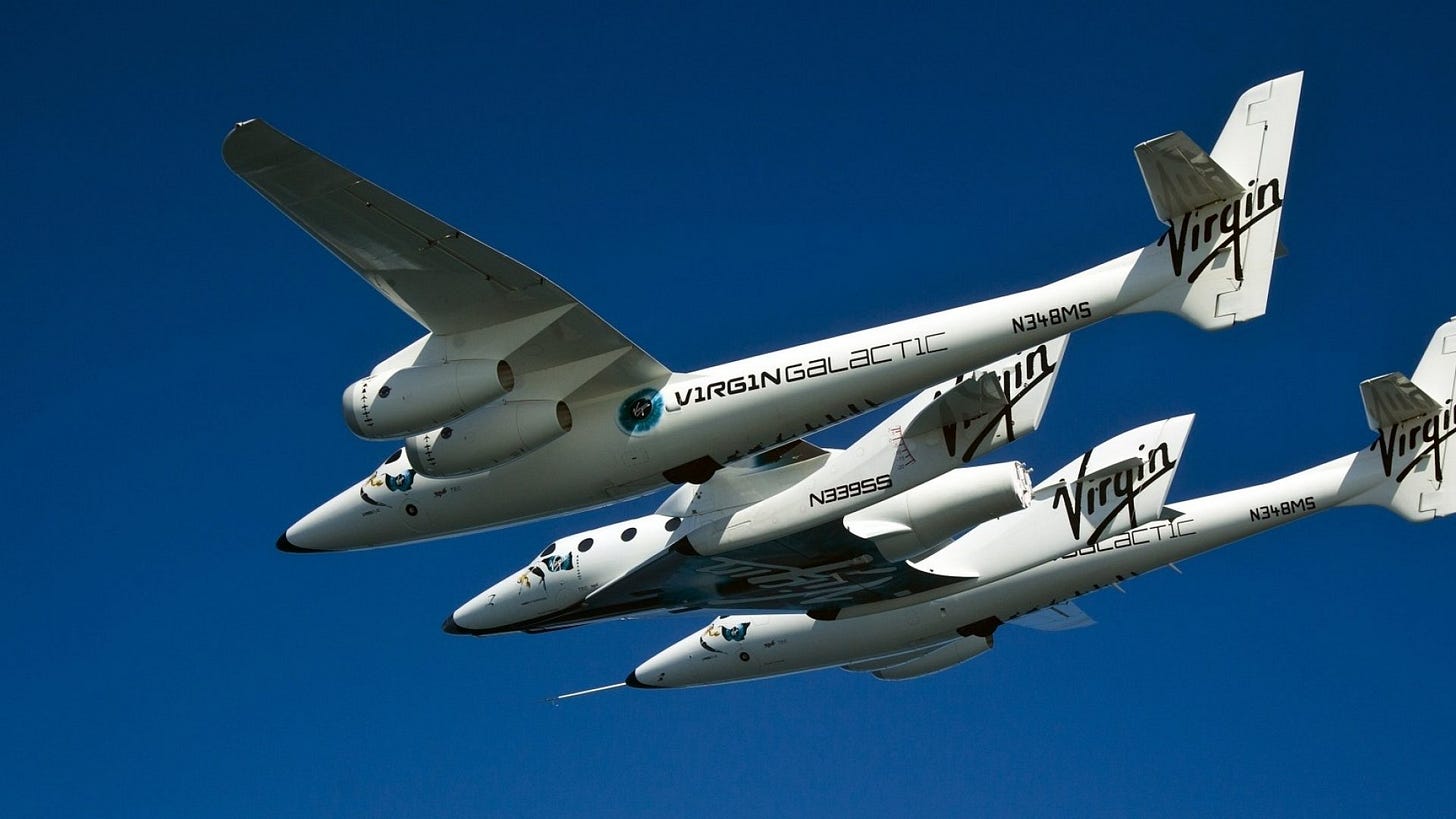Weekly - James Webb finds a mysterious cosmic question mark and more
Weekly Space News - Quick and Easy
Chandrayaan and Luna-25 scheduled to land on the same day
ISRO’s Chandrayaan-3 mission and Russia’s recently launched Luna-25 mission are scheduled to land on the very same day on the moon. Despite the fact that Luna 25 was launched last week (almost a month after Chandrayaan), they are both going to land at the south pole of the moon on the same day. This is because the Luna-25 spacecraft needs to complete only 2 orbit-raising maneuvers and 1 Lunar orbit while Chandrayaan needed to complete 5 orbit-raising maneuvers and needs to complete 5 lunar orbits. The reason for this is that the Chandrayaan-3 spacecraft is designed to be as fuel-conserving as possible (hence the need for the extra maneuvers) while the Luna-25 craft is designed to reach the moon faster.
James Webb finds a mysterious cosmic question mark
Last week the James Webb Space Telescope (JWST) spotted a mysterious question mark-shaped object in space located 1,470 lightyears from the Earth. Scientists are not completely sure about the nature of the object but believe that they are 2 galaxies merging together.
Virgin Galactic completes its first space tourism flight
Last week the privately owned space tourism company Virgin Galactic completed its very first (and much hyped) space tourism flight. The 60-minute flight happened last week on August 11. There were a total of 6 people onboard of which 3 were regular civilians. While there is no exact boundary to where space begins, the Karman line is commonly used for spaceflight. While the Karman line is at an altitude of 100 km, the spaceflight by Virgin Galactic reached only an altitude of 88 km. While this is not exactly in space according to the Karman line, it is very close to it and enough for the passengers to experience weightlessness.
ISRO tests parachute for Gaganyaan mission
Last week ISRO successfully completed the testing of its parachute that will be used to bring the Indian astronauts back to Earth after the Gaganyaan mission. The Gaganyaan mission is a mission by India to demonstrate the capability of the country to send humans to space. The parachute that was tested was a drogue parachute. This is a type of parachute that is used to slow down a rapidly moving object, unlike other parachutes that focus on a safe landing instead.





